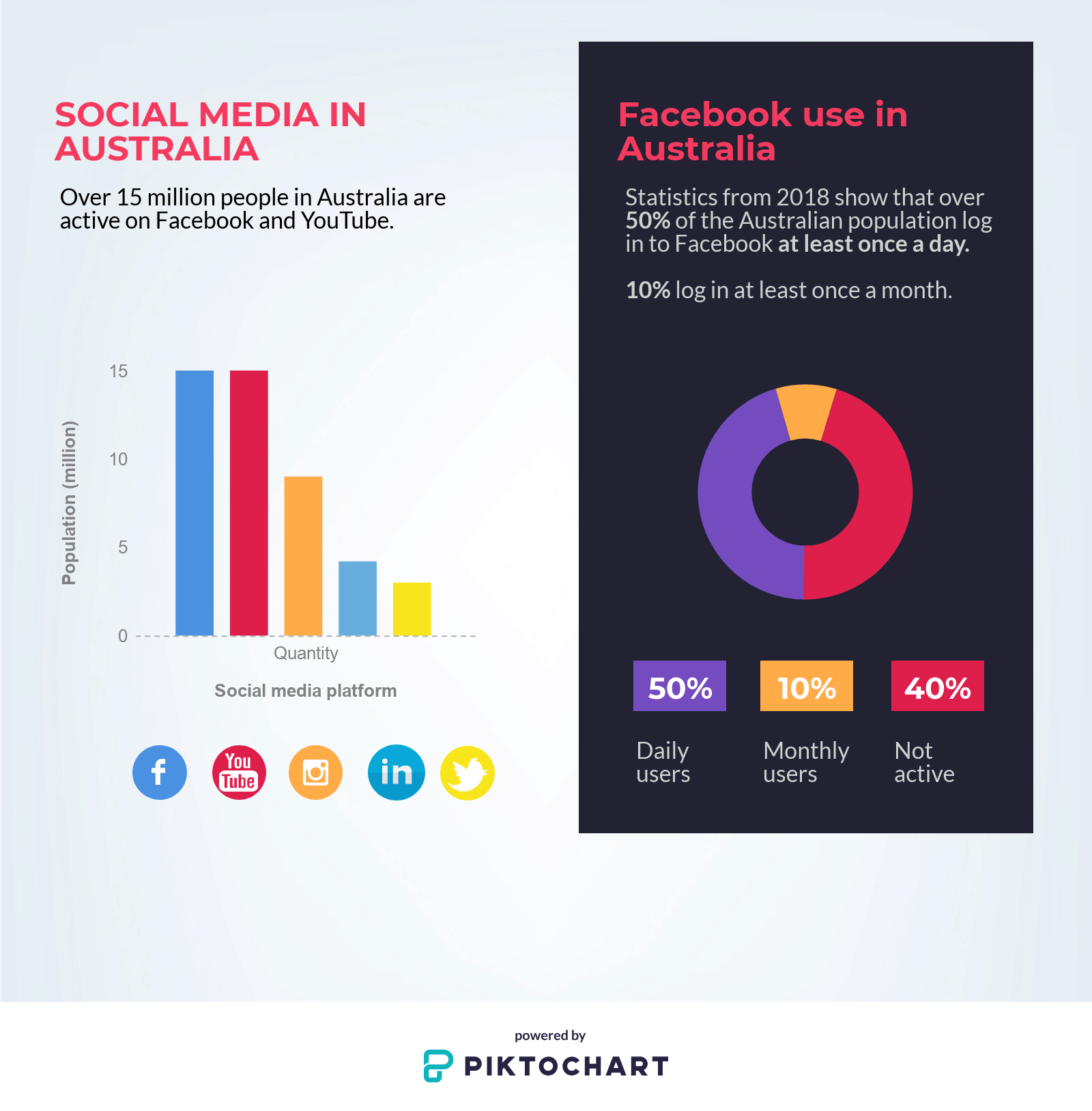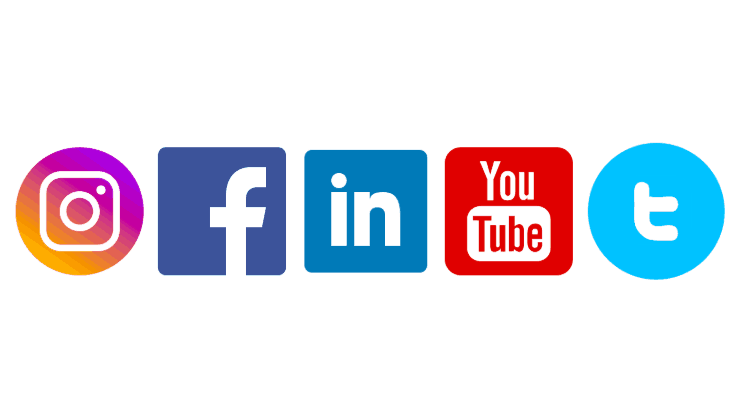Most B2B organisations expect B2B social media marketing to be an uphill battle. This is largely due to the perception that most social media platforms are designed to service the B2C market.
Although many social media platforms were initially created for personal use, the money is made in business. So every major platform has its capabilities to cater to that.
Social media for B2Bs can be logical, well-structured and effective when you put your time and effort into the platforms best suited to your business.
Researching social media platforms in your industry
The first step to successful B2B social media marketing is to choose the right platform based on your own direct research. This means you need to find out what works in your country, industry and for your buyer persona.
Don’t second-guess or assume too much as this could end up in a lot of wasted time. As an example; on a global scale, Twitter can be pretty useful for B2B. However, Twitter is not very popular in Australia, so if you are an Australian B2B looking for Australian clients, then Twitter may not be the best use of your time.
Top tip: Have an accurate buyer persona and research the relevance of the most popular social media platforms in your country before starting any accounts.
LinkedIn: B2B’s top social media platform
What it works for: Researching businesses, establishing connections with professionals and lead generation.
Helpful tools: Sales Navigator, LinkedIn Advertising
Types of content: Business content, no lifestyle (ie no “This is our new coffee machine” posts)
Frequency: Depends on the buyer persona, but weekly updates are a good grounding. Relevance is more important than frequency.
When it comes to B2B, 9 times out of 10, LinkedIn will be the most effective social media platform for building brand awareness and generating leads. It is therefore necessary for you to:
- Build a professional and informative business page
- Have all your client-facing, and service-centric employees fill out detailed information about their job roles, skills and achievements on their personal LinkedIn profiles.
- Post regular industry and company updates on your personal and business profiles.
These are just the basics. To be an absolute boss at LinkedIn, you could also invest in the Sales Navigator orLinkedIn Premium, both of which will allow you to conduct more thorough research on your leads, prospects, clients, competition, suppliers and thus build a strong Linkedin strategy.
Facebook – The most used social media platform in Australia

What it works for: Building brand awareness, listening to prospects and competitors.
Helpful tools: Facebook Advertising
Types of content: Business and lifestyle (ie here’s where you can talk about your office’s new coffee machine)
Frequency: Although there are no hard and fast rules for the frequency of posting, weekly updates are a good grounding. If you post too many updates per week, you could lose followers.
16 million Australians, 66% of the population use Facebook. As the most used social media platform in the country, there is a high probability your audience can be reached on Facebook.
While to LinkedIn can be useful for the decision stage of the buyer journey. Facebook is better suited to brand awareness which are at the initial stages. This is largely to due to the fact that making personal connections are less likely on Facebook. People are more likely to interact with company pages and brands.
Despite what many think, Facebook isn’t just for B2C as statistics gathered by Facebook show that decision makers spend more time on Facebook interacting with multiples mediums, such as groups, chats and pages, compared to the average user.
So here’s what you should seriously consider for Facebook as a part of your strategy.
Growing an Audience – increasing page followers so you have an audience receptive to your content. So you can add personality and talk about your office’s new coffee machine.
Paid Advertising – Deliver content and call-to-actions to specific people with chosen demographics and interests
Feedback Forums – Interact and listen to your audience in user created groups for honest feedback.
Customer Experience – provide immediate and attentive service for anyone interested or invested in your brand. The chat function on Facebook is the fastest growing conversion and conversation tool in the digital world.
YouTube – Not just for hosting videos
What it works for: Uploading videos, sharing videos to other platforms.
Helpful tools: YouTube advertising
Types of content: Predominantly useful business content with some lifestyle content if requested by your audience.
Frequency: Relevance is more important than frequency. Weekly content to build a following.
No matter which social media platform you look at, video has proven time and time again to lead to the most engagement. In addition to embed compatibility across most platforms, YouTube is a great place to be seen. It’s by far the largest social media video platform.
YouTube’s auto-play and recommended videos functionality also means that if you build high-quality videos with great content, the chances of you being seen accidentally by people who are interested in your content, are quite high.
When it comes to helpful content, YouTube is up there. People often search YouTube for how to’s, so this is where you could make a start. You can then graduate to updates within your industry, company, news and commentaries.
If you wish to build a following on YouTube, you’ll need to publish high-quality videos once a week. (If you wish to use it just as a hosting and sharing platform, as and when is all you will need.) Once you have a following, your audience may ask for specific content that’s more lifestyle related.
If you have the budget for it, YouTube advertising can be a big win. I personally wouldn’t recommend the pop-up ads seen on the footer of videos as they don’t tend to get much engagement. The video ads that play before the start of the selected video can be quite useful. You can track engagement, and you’ll be seen by the right people. Even if you don’t get clicks, it will almost certainly increase your brand awareness.
Twitter – 3 million users in Australia
What it works for: Establishing connections, brand awareness, sharing content, listening to customers.
Helpful tools: Click to Tweet. A function that allows readers of your blog posts to auto-Tweet key ideas to all their followers.
Types of content: All types in short form, text limit 140 characters.
Frequency: Multiple times a day.
Although Twitter only has 3 million users in Australia, it is growing. Twitter users in Australia tend to follow over 300 other users for regular news and updates, but don’t tend to engage in conversations. Therefore, using Twitter for conversations with your desired audience will be a difficult undertaking in Australia.
However, if your industry is particularly active on this platform, it’s a good way to keep up-to-date on industry news, especially if your field has a lot of international contributors and subject matter experts.
Businesses using Twitter tend to be in hospitality, entertainment, retail and technology sectors because these fields have a high-turnover of events and information. So if you’re area of expertise isn’t listed here but fits the bill, you should open a Twitter account and search for contributors in your field to test the viability of a business account.
Useful tips:
- Twitter users tend to have at least some post-school education, live in urban areas and earn above-average incomes.
- Twitter takes consistent engagement to maintain successfully. Pre-loading Tweets for the week isn’t going to work as reaction and interaction with other account holders is key.
Instagram – Great for visually focused and creative industries
What it works for: Building an audience, brand awareness, showcasing new designs and products.
Helpful tools: Instagram video advertising with CTA’s, easy share with Facebook.
Types of content: Photos, animations, videos, illustrations, text overlay snapshots.
Frequency: Needs to be regular, consistent and at least on a weekly basis to grow following.
Due to the more mature audience of typical B2B marketing, Instagram isn’t a great option as 44% of users are under 24. There are exceptions, particularly for businesses in visually creative fields. Even so, it’s crucial that you maintain a visual portfolio of your company’s work on a website as Instagram isn’t frequently used by most professionals over the age of 35.
One benefit of Instagram is that you don’t need an account to view images on a company’s Instagram page, but the user experience of this view isn’t ideal as users can’t click to “next” images. They need to go back to the main display and view images individually.
Business areas suited to having an Instagram presence include design, interior decorating, architecture, infrastructure and aesthetics suppliers among others.
Instagram needs to be visually stimulating, so your products need to look attractive, not just have different designs. If you’re selling different kinds of pipes, you’re going to find yourself struggling for engaging content.
Now that we’ve had a look at all the potential B2B social media platforms that you can choose from, let’s consider what to do next.
Determine your social media objectives
Lead generation is the most common objective, however, it’s not always the best one to have.
The greatest benefit of Facebook, for example, lies in building a presence – that’s marketing jargon for making people remember you so that when they need information or help, they come to you first.
This could happen in any of the following ways:
- They read a useful blog post that solves or helps with their problem
- They check pricing on your website
- They fill out a contact form on your website
- They ask you a question on social media via a comment or chat
All of the above are opportunities for you to move them down your sales funnel, but only one of them takes place on your social media platform. This is where tracking your visits comes in handy.
So review your objectives and make them clear, because lead generation as a sole objective on any of the platforms is going to lead to failure.
A good objective is to increase awareness of your value to leads and prospects on that platform. When you can communicate this value effectively, lead generation on LinkedIn, Facebook and Twitter can become your secondary objective.
Regular updates are useless unless you have valuable content
That’s right. Try, test and spend all you want. If your content is generic and of no value to your buyer persona, then you’re going to feel like a hamster in a wheel: posting updates for the sake of sticking to a schedule with no positive outcome.
So before you decide to start a social media page, you need to have a process for generating regular and valuable content for your website, in the form of blogs and gated downloadables. You can then share this content on social media. Although sharing content can be valuable, the true value lies in sharing your own content so that your followers come back for your unique offering.
Once you’ve established where your social media platforms lie in your buyer’s journey, you need to consider how you keep in contact with them, not just through social media, but via email.




